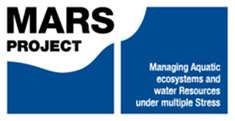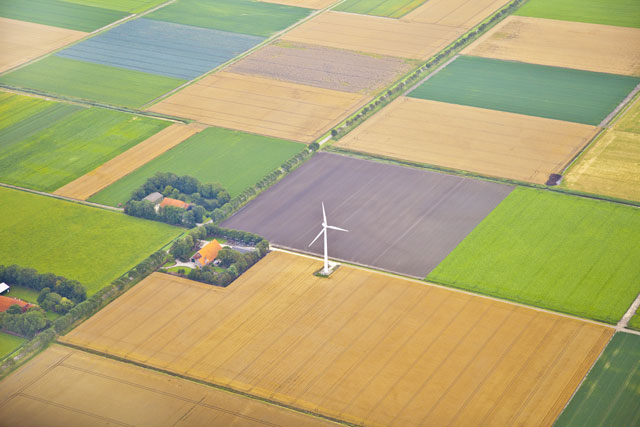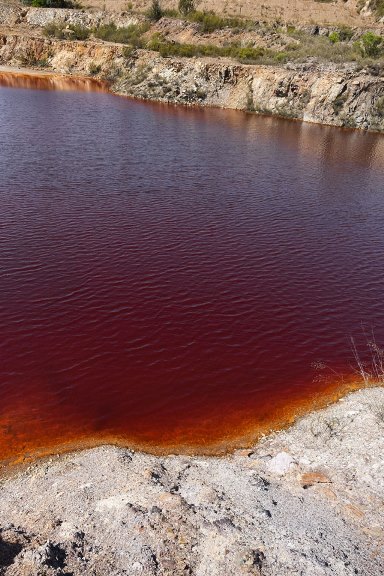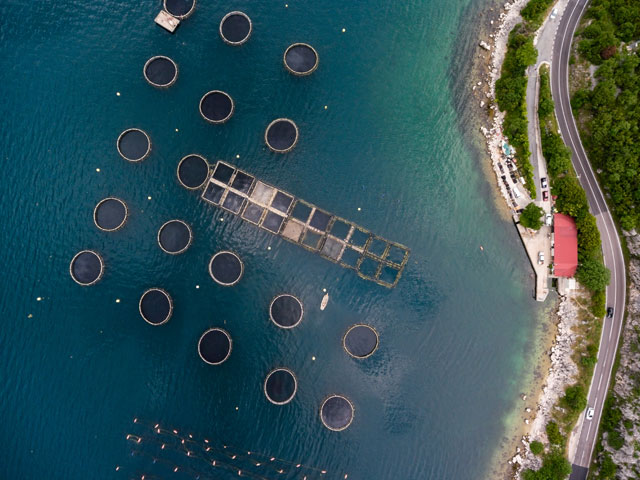Diffuse Pressures
Diffuse pressures are caused by pollutants and contaminants entering surface and ground water through diffuse pathways such as rainfall, soil infiltration and surface runoff. Diffuse pressures are generated by a wide range of human land uses, primarily emissions resulting from agriculture, urban growth, transport and industrial production. A common state change caused by diffuse pressures in Europe is eutrophication, often a result of nutrient enrichment from agricultural fertilisers and manure, causing impacts such as reductions in biodiversity and ecosystem service provision, particularly of clean drinking and bathing water.
Pressure types
There are a number of point source pressures generated by different drivers:
Urban development
Urban runoff - pollutants including metals, chemicals, medicines, microplastics, pesticides and hydrocarbons may enter water bodies from runoff discharges from the urban environment (housing, commercial buildings, transport systems etc.) through routes not identifiable to point sources.
Agriculture
Agriculture pollution - fertilisers and pesticides used in farming can be transferred to surface and groundwaters through diffuse pathways. Two important pollutants associated with diffuse pollution from agriculture are nitrogen (transported in dissolved form in run-off water) and phosphorous (transported bound to soil particles), which are both commonly used in fertilisers and found in animal waste and slurry spread onto the land. Microbial pathogens and bacteria from animal waste can also pose a significant risk to public and animal health in freshwaters. Fine sediments from soil erosion on fallow and heavily grazed land, transported during heavy rainfall may cause siltation of water bodies.
Forestry pollution - similarly to agriculture, certain forestry practices involve the use of fertilisers and pesticides, which are then introduced into the watershed hydrological cycle.
Industry
Atmospheric deposition - nitrogen compounds, pesticides, heavy metals and other pollutants emitted into the air from industrial processes may be transferred to water bodies through rainfall and runoff. This type of diffuse pressure is inherently transboundary in nature, and is perhaps best known publicly in Europe as acid rain caused by emissions of sulphur dioxide and nitrogen oxide, which has been largely mitigated in recent years by controls on industrial emissions.
Mining - mines and (particularly) abandoned mines can be significant diffuse sources of metals, sulphide minerals, dissolved solids and salts into surrounding ground and surface waters; often when abandoned mines begin to fill with water and mobilise latent pollutants.
Contaminated and abandoned industrial sites - ex-industrial sites often contain residual pollutants –chemicals, toxins and metals – which may leach through soil into surface waters and groundwaters.
Aquaculture
Aquaculture pollution - farming fish in both freshwater and transitional waters generates high levels of nutrient waste, which if not adequately contained, recycled or treated, may reach surrounding water bodies.
Geographical distributions and trends
Diffuse pollution from agriculture is a significant pressure in more than 40 % of European rivers and coastal waters, and in around 33% of lakes and transitional waters (EEA 2012). Inland water bodies particularly affected by diffuse pollution are found in lowland regions in North-Western and Southern Europe with widespread intensive agriculture and numerous urban populations (EEA 2012). Transitional waters in the Baltic Sea, the North Sea around The Netherlands and Belgium, and the west coast of the Black Sea are heavily pressured by diffuse pollutants (EEA 2012). There is a strong correlation between the incidence of diffuse pressures and ecological status in water bodies across Europe: where diffuse pressures are high, ecological status is generally low (EEA 2012).
Stressors generated
Diffuse pressures predominantly generate chemical stressors, arising from the enrichment of nutrients which can cause eutrophication, algal blooms, turbid waters and oxygen depletion (EEA 2008). Morphological stressors may also be generated as algal blooms and fine sediments clog fish spawning areas and other aquatic habitats.
Potential for mitigation
The diffuse pathways by which pollutants reach water bodies mean that designing effective mitigation strategies can require complex and complementary large-scale policy and management interventions, for example through the Water Framework Directive’s catchment-scale River Basin Management Plans.
In urban areas, public awareness campaigns about water consumption and leakages and misconnections in waste water systems may be promoted, and Sustainable Urban Drainage Systems (or SUDS) implemented, often using Nature Based Solutions principles linking ‘green’ and ‘blue’ areas of the urban environment (EC 2016). Abandoned mines may be treated using chemical methods (e.g. the addition of lime), flocculation techniques to isolate pollutants, and wetland filtration areas (Environment Agency 2008). Atmospheric deposition of nitrogen and other hazardous substances is addressed through a number of EU directives designed to reduce emissions of atmospheric pollutants, for example the Gothenburg Protocol (1999).
Diffuse pressures from agriculture are managed through strategies including limiting fertiliser and pesticide use (e.g. through the Nitrates Directive); efficient manure storage; ‘set aside’ farmland and riparian strips to buffer pollutant diffusion; and the promotion of organic farming. The water management goals of the WFD are aligned with the Common Agricultural Policy through a mechanism termed cross-compliance, which ties direct payments to farmers to compliance with a set of rules based on maintaining agricultural land in good environmental condition, for example reducing the spreading of sewage sludge on farmland.
Further reading
Reports and publications:
EC (2013). A Water Blueprint for Europe (Download report, 1.28mb)
EEA (2012). European waters - assessment of status and pressures (Download report, 28mb)
EC (2016). Mapping and Assessment of Ecosystems and their Services: Urban Ecosystems (Download report, 5.4mb)
Environment Agency (2008). Abandoned mines and the water environment. Science project SC030136-41. (Download report, 2.24mb)
Selected Freshwater blogs:
Freshwaterblog (2014). Riparian zones and freshwater ecosystems: a new EU science-policy report (External website)
Freshwaterblog (2016). Conservation and restoration of riparian zones under multiple pressures (External website)
Websites:
European Environment Agency - Diffuse sources (External website)
UNECE - Gothenburg Protocol (External website)






